- Wondering how to get Monopoly GO! free rolls? Well, you’ve come to the right place. In this guide, we provide you with a bunch of tips and tricks to get some free rolls for the hit new mobile game. We’ll …
Best Roblox Horror Games to Play Right Now – Updated Weekly
By Adele Wilson
Our Best Roblox Horror Games guide features the scariest and most creative experiences to play right now on the platform!The BEST Roblox Games of The Week – Games You Need To Play!
By Sho Roberts
Our feature shares our pick for the Best Roblox Games of the week! With our feature, we guarantee you'll find something new to play!All Grades in Type Soul – Each Race Explained
By Adele Wilson
Our All Grades in Type Soul guide lists every grade in the game for all races, including how to increase your grade quickly!
Wizard Hex Walkthrough
Wizard Hex is an original board game experience for the iPhone, iPad, and iPod touch developed by Trouble Brothers LLC. While the game is currently undergoing revisions to include more complete instructions in-app, the developers have assembled this handy quick start guide that will provide you with all the basics, tips, and tricks you’ll need to be on your way to becoming a Wizard Hex champion.
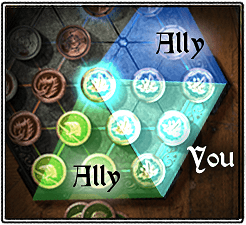
Wizard Hex – Game Introduction
Wizard Hex is an original board game experience for the iPhone, iPad, and iPod touch developed by Trouble Brothers LLC. While the game is currently undergoing revisions to include more complete instructions in-app, the developers have assembled this handy quick start guide that will provide you with all the basics, tips, and tricks you’ll need to be on your way to becoming a Wizard Hex champion.
Quick Start Guide
Game Components:
One magical ebony stone board with 19 jeweled spaces
Elemental Tokens: enough for each Wizard, depending on your level
Spell Book: Elemental token count and future spells
Touchstone: For accessing Wizard Hex Rules
How To Win:
When the board is filled, or there are no more moves that can be made by anyone, the Wizard who controls the most space with their primary element on the board wins the game! If there is a tie, your allies’ controlled board space counts toward your total. If you can eliminate your opponent(s) from the board before the board is filled, you also win.
How To Start:
Choose your Element: Select your primary element to play. You use this element to win the game by controlling more board space than anyone else! During the game, you play both your primary element and your allies on either side of your primary element.

TIP: No element may attack an adjacent element next to itself as seated around the board. In certain board configurations, your opponent may be able to play one or more of the same elements as yourself (seeBoard Configurationsbelow).
Determine Opponents: Use the small scrolls at each Wizard’s starting position to choose if you wish to engage a Wizard (human shape) or a mechanized opponent (gears) to play that element in the game. If the scroll is closed, then that board position is not being used. You may play with any combination of Wizards (human or mechanized) — from 1-6 opponents.
Select a Wizard Level: There are three Wizard levels of play: Apprentice / Journeyman / Master. The higher the level, the fewer the tokens that are available to use during play.
Board Configurations: Depending on the number of Wizards playing, there will be different strategies and starting positions, but there are only three possible relationships using a two-Wizard game as an example:
Across Challenge:Wizards sit opposite each other in this game. This means that between both Wizards’ primary elements and allies, all the elements are in-play and no Wizard shares an element.
EXAMPLE: With Earth playing Wind, Earth has Fire and Ice as its allies to use to expand, block, and attack during the game, and Wind has Lightning and Water to help do its bidding!
Asymmetric Challenge: Wizards sit one element apart from each other with the shared ally in-between! In this game, five of the elements are being used and the one furthest from both Wizards’ elements is left out.
EXAMPLE: If Lightning were to challenge Water in a game, Lightning would have Fire and Wind as allies. Water would have Ice and would share Wind as an ally with Lightning. Either Wizard may choose to use Wind during their turn. Earth is not used in this specific example because it is not an ally to either.
Adjacent Challenge: Wizards sit adjacent to each other and here’s the twist — since your opponent’s Wizard also is an ally (adjacent element), either Wizard may play the other’s primary element, but they maynotattack each other directly, because they are allies. However, each Wizard has a separate ally that can be used to attack. In this game, only four of the elements would be used.
EXAMPLE: With Fire challenging Earth to a duel, Fire’s allies are Lightning and Earth (which happens to be Fire’s opponent). At the same time, Earth’s allies are Ice and Fire. Hence, Fire can use Earth — and vice versa. Even though they are competing against each other, because they are allies, they cannot directly attack one another.
Controlling Your Elements: You may only move your primary element and your allies that are on either side (which may include some of the same elements or allies as your opponents).
How To Play:
How The Board Helps You: On your turn, your side of the board lights up and your own element’s tokens, plus your allies’ tokens on either side, glow magically, showing that they can be moved onto the board. When you touch your element’s tokens or your allies’ tokens, the jeweled spaces on the board where you are allowed to move also glow. The same is true when you can attack — your available element or ally tokens glow, and when you touch one of those token, any adjacent element tokens that may be attacked glow.
TIP: Sometimes adjacent tokens do notglow. This is because they are also allies in common with the attacking token you are attempting to use, and therefore cannot be attacked.
How The Turn Sequence Works: For the first turn only, each Wizard has one move to place their primary element or ally onto the board from their three available token stacks (one primary element and two allies). When you touch the token stack the jeweled board spaces will glow where a token is allowed to be moved (only one of three starting spaces at first). For each subsequent turn, each Wizard has two moves in which they may in any order, with any element, in any combination, do the following: Expand. Stack. Attack.
Expand Your Element: You may expand your position on the board by placing your primary element or ally on any open space, as long as: A) It is at one of the three starting positions next to your side of the board; or B) It is adjacent to another element token of the same type that you have already placed. Be careful not to have your three starting positions blocked by an opponent — or even by your own allies by mistake — because they are the only three spaces that your elements can start onto the board.
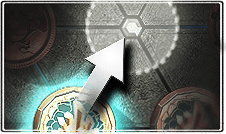
TIP: Once placed, you may notmovea token from one space on the board to another. You may only move a new token from your token stack.
Stacking Your Elements: You may stack a new token from your token stack onto an element of the same type already on the board to increase its power. This magical effect — “transmutes” your Bronze element into Silver; and from Silver into Gold if you stack a third token on top. You may only stack an element to Gold. Once an element reaches the Gold level, it is indestructible and cannot be attacked. However, it can still attack other elements that are not yet Gold.
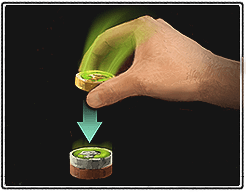

Attack Elements: If you wish to attack an element, you may do so under two conditions: A) You must be attacking from an adjacent board space, and B) You can only attack elements that are not ally’s to the element you are using to attack (adjacent starting positions). If a token you control can attack, it will glow. When you touch that token, the available element tokens you can attack will also glow dimly. To attack, simply drag your attacking token to the token you wish to attack and one of the following three things will happen:
Tokens Equal Level: (Bronze vs. Bronze or Silver vs. Silver) — Both are eliminated.
One Level Apart: (Silver vs. Bronze or Gold vs. Silver) — Weaker is eliminated & stronger is reduced to Bronze.
Two Levels Apart: (Gold vs. Bronze) — Bronze is eliminated, and Gold takes over the space where the opponent was with a Bronze, leaving a Bronze where it started.
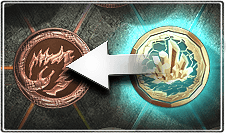
TIPS: A) Gold cannot be attacked but can attack and B) You may also use your ally tokens to attack your other ally — something you may not choose to do very often, but may be necessary near the end of the game to clear out space on the board, or because such a move is required in order to keep the game going until all the board spaces are filled.
How the Game Ends:
You must make a move it if is available (your turn will automatically skip if there is not a legal move). Play continues until all the board spaces are completely filled. At that point, the game ends immediately and the Wizard whose primary element controls the most board space wins! Tie games are determined by counting both your primary element’s & allies’ controlled board spaces. The game also ends if you completely remove your opponent’s primary element from the board. Until a player enters the board with their primary element, they are still in play. Only once they have entered the board and have been eliminated, have they lost.
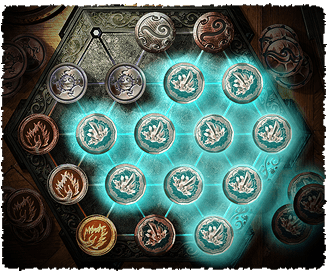
Guide and images provided courtesy of Trouble Brothers LLC.
More articles...
Monopoly GO! Free Rolls – Links For Free Dice
By Glen Fox
Wondering how to get Monopoly GO! free rolls? Well, you’ve come to the right place. In this guide, we provide you with a bunch of tips and tricks to get some free rolls for the hit new mobile game. We’ll …Best Roblox Horror Games to Play Right Now – Updated Weekly
By Adele Wilson
Our Best Roblox Horror Games guide features the scariest and most creative experiences to play right now on the platform!The BEST Roblox Games of The Week – Games You Need To Play!
By Sho Roberts
Our feature shares our pick for the Best Roblox Games of the week! With our feature, we guarantee you'll find something new to play!All Grades in Type Soul – Each Race Explained
By Adele Wilson
Our All Grades in Type Soul guide lists every grade in the game for all races, including how to increase your grade quickly!







